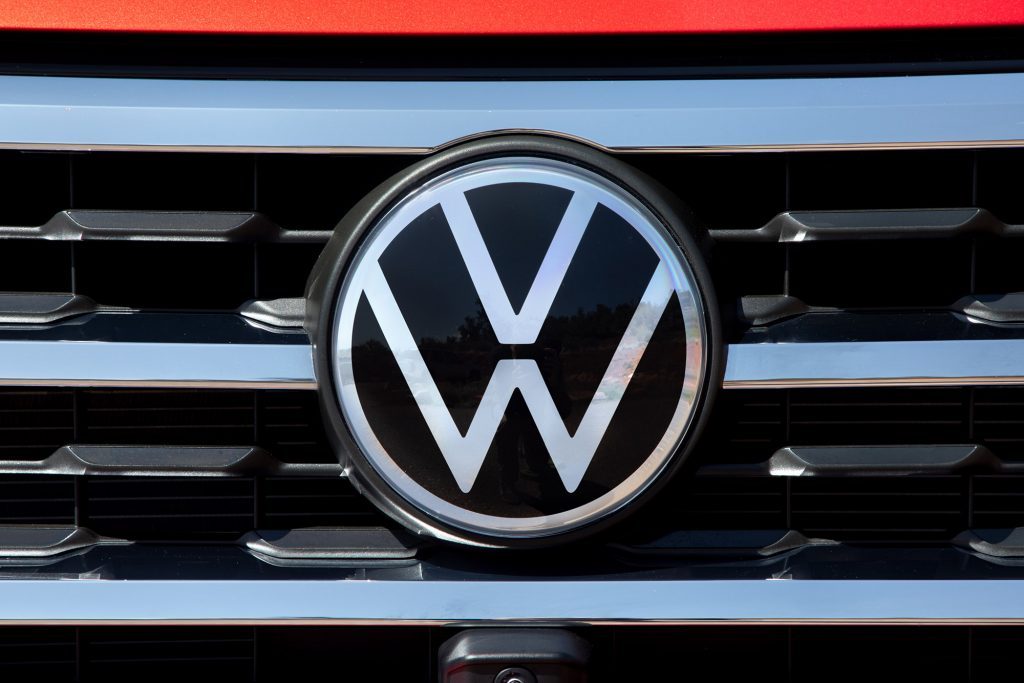VW poses a dilemma for LGES and SKI
LGES and SKI risk losing VW if they stick to pouch batteries
By Kim Byung-wookPublished : March 17, 2021 - 15:45

Volkswagen’s latest announcement that it will transition to “prismatic” batteries from “pouch” batteries starting from 2023 poses a dilemma to South Korean battery developers LG Energy Solution and SK Innovation, which have been supplying pouch-type cells to the world’s No. 1 automaker.
According to industry experts Wednesday, LGES and SKI are hesitating on moving forward with the development of prismatic batteries even if it means losing VW, because the pouch design is more suitable for high-nickel batteries for premium electric vehicles.
“VW’s announcement is a more of a declaration that the automaker will no longer be swayed by battery suppliers. The global battery industry trend changes very fast, and it remains to be seen how VW’s strategy to shift to prismatic batteries will play out. Compared to pouch batteries, prismatic ones are heavy and less powerful,” Daishin Securities analyst Han Sang-won said.
Han added that VW chose prismatic batteries for two advantages -- standardized size and access to the Chinese EV market. According to Han, pouch batteries have more flexible designs, but are less standardized. For automakers, standardized prismatic cells are easier to apply to different EV designs.
Also, using prismatic cells, which are mostly manufactured by Chinese suppliers such as CATL and BYD, can give VW a wider access to the Chinese EV market, which is tightly controlled by local authorities.
Sun Yang-kook, an energy engineering professor at Hanyang University, echoed Han’s view, saying that the pouch format is more suitable for high-nickel batteries for premium EVs.
“When an EV battery is charged and discharged for the first time, gases build up inside. In case of pouch batteries, these gases can be removed before they are made into a final product. However, prismatic batteries, which are welded and sealed off, can’t remove these gases. These gases can create a gap between the layers of cathodes, anodes and separators and make batteries unstable,” Sun said.
Prismatic batteries are basically rectangular aluminum cans. Inside these cans, a thin film of three layers -- in the sequence of cathode, separator and anode -- is rolled up like toilet paper. However, inside pouch batteries, as the name suggests, a stack of battery components is packaged or wrapped with thin, elastic aluminum plastic film in a flat rectangular shape, which results in a lighter weight.
“Also, pouch batteries can stack battery components inside without any empty spaces, whereas prismatic batteries contain a roll of battery components with leftover spaces around the edges. As components are stacked, not rolled, pouch batteries are guaranteed a greater energy density,” Sun said.
However, for automakers who have to consider price competitiveness, prismatic batteries are a more economical option. Prismatic batteries, thanks to their design, can be mounted on EVs like Lego blocks without any additional process, whereas pouch batteries have to be put together into a pack, and then into a module, a process which drives up the overall costs, he explained.
Meanwhile, LGES and SKI currently have no plans to develop prismatic batteries.
“LGES has the required technology, but doesn’t have any plans to develop prismatic batteries,” said an industry source with knowledge of the matter.
“SKI has only pouch battery technologies, and it hasn’t been decided whether we will start developing prismatic battery cells. Despite VW’s transition to prismatic batteries, there is no immediate concerns as there will be more global demand for pouch batteries than supply until 2030,” an SKI official said.
LGES manufactures cylindrical and pouch batteries, whereas SKI only makes pouch batteries. Should LGES and SKI develop prismatic batteries, LGES will have a lead, experts say.
“Cylindrical and prismatic batteries are similar in that components are encapsulated inside sealed metal containers. LGES’ experience in cylindrical batteries will make development of prismatic batteries relatively easier compared to SKI, which has no expertise in both cylindrical and prismatic cells,” another industry source said.
By Kim Byung-wook (kbw@heraldcorp.com)







![[Weekender] How DDP emerged as an icon of Seoul](http://res.heraldm.com/phpwas/restmb_idxmake.php?idx=644&simg=/content/image/2024/04/25/20240425050915_0.jpg&u=)



![[KH Explains] No more 'Michael' at Kakao Games](http://res.heraldm.com/phpwas/restmb_idxmake.php?idx=644&simg=/content/image/2024/04/28/20240428050183_0.jpg&u=20240428180321)






![[Herald Interview] Mistakes turn into blessings in street performance, director says](http://res.heraldm.com/phpwas/restmb_idxmake.php?idx=652&simg=/content/image/2024/04/28/20240428050150_0.jpg&u=20240428174656)
